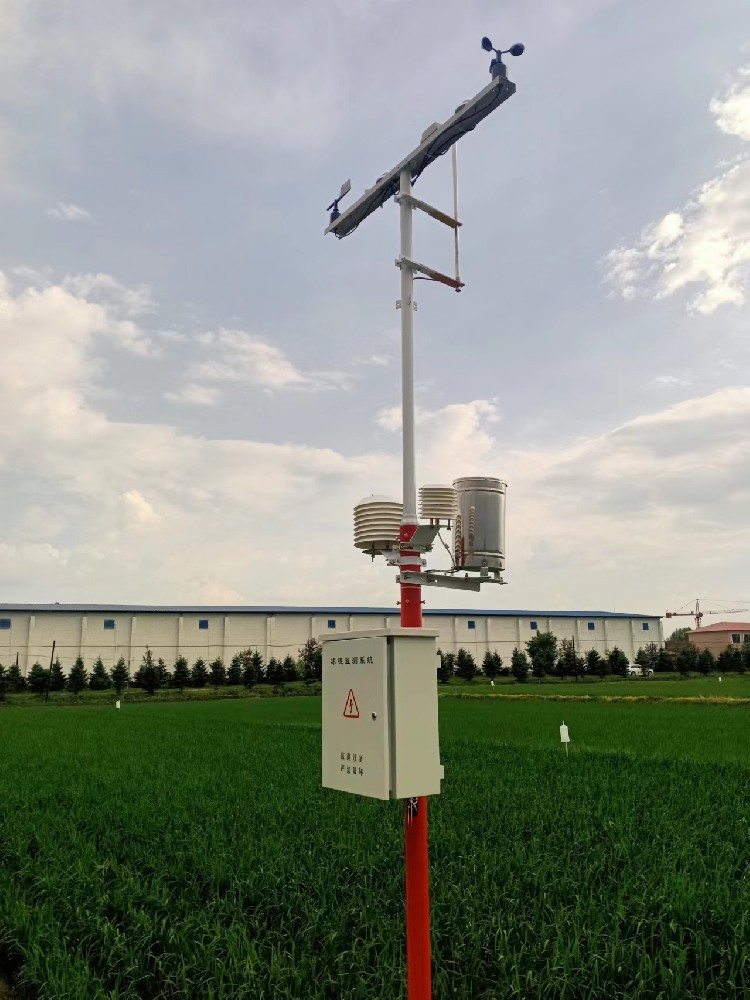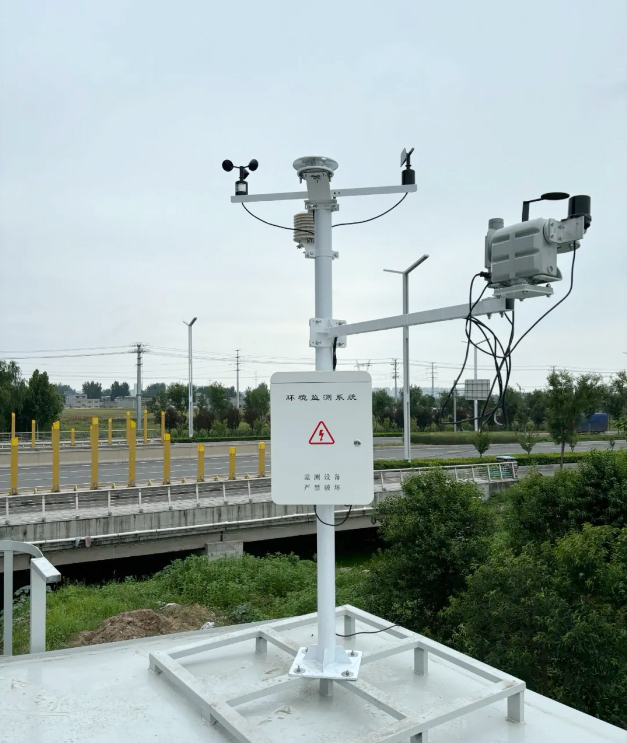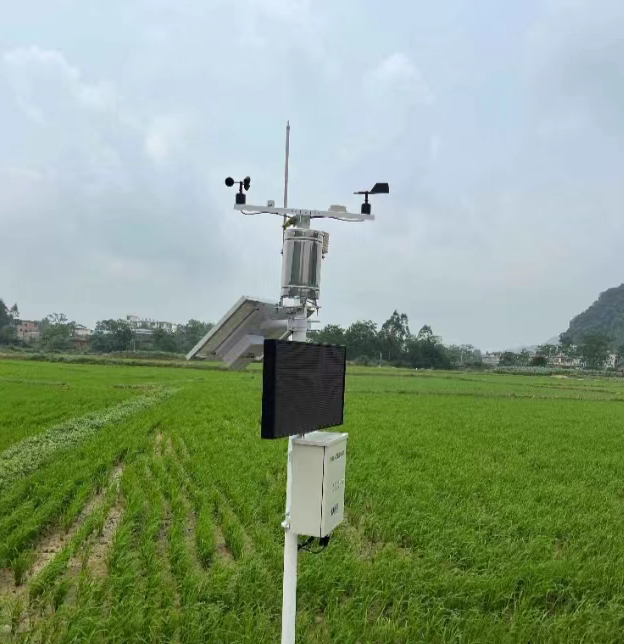

— Blogs —
—Products—
 Consumer hotline +8618073152920
Consumer hotline +8618073152920 WhatsApp:+8615367865107
Address:Room 102, District D, Houhu Industrial Park, Yuelu District, Changsha City, Hunan Province, China
Product knowledge
Time:2024-10-16 16:24:03 Popularity:630
Smart weather station is a highly integrated and automated weather monitoring equipment, which utilizes modern technology for real-time monitoring and data collection of multiple weather elements. This kind of weather station adopts advanced sensor technology and data processing technology, which can accurately and quickly acquire meteorological data, and transmit the data to database or cloud platform through wireless technology, realizing real-time monitoring, early warning and data analysis of meteorological information.
Smart weather station can test a variety of meteorological parameters, including but not limited to:
CO2 Concentration: Monitor the CO2 content in the atmosphere, which is important for assessing air quality and predicting climate change.
Barometric Pressure: Measuring atmospheric pressure through barometric pressure sensors, which is used for weather forecasting and climate research.
Rainfall: Measurement of precipitation by rainfall sensors (e.g. tipping bucket rain gauge or piezoelectric rain gauge), which is critical for water resource management and flood and drought control.
Wind speed and direction: Measure wind speed and direction by wind speed sensor/wind direction sensor (ultrasonic or mechanical wind speed and direction sensor), which provides data support for weather forecasting, aviation and navigation.
Illuminance: Monitor the intensity of solar radiation, which is valuable for solar energy utilization and agricultural photosynthesis research.
Air temperature and humidity: Measurement of temperature and humidity in the atmosphere using temperature and humidity sensors (e.g. resistive, capacitive, etc.), which is vital for weather forecasting, agricultural production and human comfort assessment.
Soil temperature and humidity: Monitoring temperature and humidity in the soil is important for crop growth and irrigation management.
Air quality: such as PM2.5, PM10, TVOC sensors to monitor air quality.
Solar Radiation: Solar radiation sensors assess solar energy intensity.
Snow Depth Sensor: Used to measure the depth of snow.
UV Sensor: Used to measure UV intensity.
Soil temperature and humidity sensor: used to measure the temperature and humidity of soil.
 |  |  |  |  |
| Anemometer Wind Speed sensor | Wind direction sensor | Tipping bucket rain gauge sensor | Tipping bucket rain gauge sensor | Piezoelectric Rain Gauge |
 |  |  |  |  |
| Atmospheric Temperature Humidity air pressure Sensor | ultrasonic wind speed and direction sensor | 5 in1 Ultrasonic Weather Station Sensor | All-in-One Weather Station | 7 in1 Ultrasonic Weather Station Sensor |
 |  |  |  |  |
| Solar Radiation Sensor | Solar Radiation Sensor | Photosynthetically Active Radiation Sensor; | illumination sensor | Ultrasonic Snow Depth Sensor |
 |  |  |  |  |
| Noise measurement sensor | CO2 sensor | PM2.5 and PM10 sensors | Visibility sensors | Soil Moisture Temperature sensor |
The reason why the intelligent weather station is intelligent is mainly reflected in the following aspects:
High-precision sensors: adopting high-precision anti-interference sensors, such as ultrasonic wind direction and wind speed sensors, to ensure the accuracy of data.
Intelligent data processing: built-in microprocessor and memory, capable of real-time processing, storage and transmission of meteorological data. At the same time, it utilizes artificial intelligence and big data analysis technology to deeply analyze the collected data and provide prediction and decision-making support.
Wireless communication: Equipped with advanced wireless communication modules (e.g. GPRS, Wi-Fi or LoRa) to realize real-time data transmission and remote monitoring.
Data analysis capability: Built-in algorithms or combined with a cloud-based analytics platform for data processing and preliminary analysis.
Remote monitoring and management: Realize remote transmission of data and equipment status monitoring through IoT technology.
Data collection automation: Sensors automatically collect meteorological data without human intervention.
Early warning system: automatically trigger early warning information according to data analysis results.

The automation advantages of intelligent weather station are mainly reflected in the following aspects:
- Automatic data collection: without manual intervention, the sensor can collect weather data 24 hours a day without interruption.
- Real-time monitoring: the data is transmitted in real time, so that users can grasp the latest weather information at any time.
- Automatic Alarm: When abnormal weather conditions are monitored, the system can automatically issue an alarm to remind users to take appropriate measures.
- Saving labor: Automated operation reduces the dependence on labor and lowers operating costs.
- Improve efficiency: Rapid data processing and transmission improves the efficiency of weather monitoring and provides timely support for decision-making.
- Stable and Reliable: Reduced human error improves data stability and reliability.
- Easy to maintain: The modularized design of the smart weather station makes maintenance and upgrading more convenient.
- Data analysis automation: built-in algorithms or cloud analysis automatically process data and generate reports to improve decision-making efficiency.
The real-time data transmission function of Intelligent Weather Station is usually realized through the following steps:
1. Data acquisition: various sensors in the weather station collect real-time temperature, humidity, wind speed, wind direction, air pressure and other meteorological data.
2. Data Processing: The collected data are initially processed by the built-in microprocessor or data collector to ensure the accuracy and integrity of the data.
3. Wireless communication: The processed data are sent to the remote server or cloud platform via wireless communication module (e.g. GPRS, 3G/4G, LoRa, Wi-Fi, satellite communication, etc.).
4. Network transmission: data are transmitted to the destination via the Internet or a dedicated network, which can be the data center of the meteorological department, agricultural management system or other user terminals.
5. Real-time monitoring: Users can view and analyze the meteorological data in real time through computers, cell phones or other terminal devices.
6. Data storage: the transmitted data will be stored on the server or cloud platform at the same time for historical data analysis and future trend prediction.
In conclusion, real-time data transmission of smart weather stations mainly relies on advanced communication technologies and Internet of Things (IoT) platforms. These systems usually integrate GPRS, 4G/5G, Wi-Fi, LoRa, or satellite communication modules to ensure that data can be instantly sent to data centers or cloud platforms. Through these wireless communication methods, weather stations can upload collected data such as temperature, humidity, wind speed, and rainfall in real time for remote monitoring and analysis. In addition, the use of cloud platform makes data processing and storage more efficient, and users can access these data at any time through mobile devices or computers.

High precision: adopts high-precision sensors to ensure the accuracy of data.
Real-time monitoring: able to monitor a variety of meteorological elements in real time and provide timely weather information.
Intelligent data processing: utilizes artificial intelligence and big data analysis technology to provide forecasting and decision-making support.
Wide applicability: applicable to a wide range of environments, from urban to remote areas.
Higher equipment cost: due to the use of high-precision sensors and intelligent data processing technology, the equipment cost is relatively high.
Energy-dependent: Although some smart weather stations use renewable energy such as solar energy as the main power source, a stable power supply is still required in certain areas or environments.
Large initial investment: the acquisition cost of advanced functions and equipment is high.
High technology dependency: Dependency on network connectivity and power supply may lead to data disruption.
Increased complexity: Maintenance and troubleshooting may require specialized knowledge.

Smart weather stations have a wide range of application scenarios, including but not limited to:
Weather forecasting and research: Providing a large amount of weather data for weather model validation and weather forecast improvement.
Agriculture and forestry: Farmers and forestry managers can use the data provided by intelligent weather stations to determine the best crop planting time, irrigation scheme and fertilizer application, and improve the yield and quality of crops.
Aviation and Navigation: Providing pilots and mariners with accurate weather conditions by monitoring data such as wind speed, wind direction, precipitation and visibility.
Urban environmental monitoring: Monitoring and recording urban climate data such as temperature, humidity and wind speed for urban planning and environmental protection.
Renewable Energy Utilization: Determine the location and size of optimal wind and solar energy facilities by measuring data such as wind speed and direction as well as solar radiation and sunshine hours.
Disaster warning and emergency response: Providing timely weather data for disaster warning and emergency response.
In agricultural production, the application of intelligent weather station is extremely wide, specifically including:
- Precise irrigation: Intelligent adjustment of irrigation plan by monitoring soil moisture and atmospheric humidity to save water resources.
- Pest management: predict the probability of pests and diseases according to temperature and humidity changes, and take control measures in advance.
- Crop Growth Optimization: Provide data such as light and temperature to guide the best planting time and environmental regulation of crops.
- Disaster warning: Monitor extreme weather, such as high winds and heavy rains, and provide early warning to minimize losses.
- Fertilizer Decision Making: Combine soil temperature and humidity and nutrient sensor data to apply fertilizer scientifically and improve efficiency.
- Intelligent greenhouse control: In a greenhouse environment, automatically adjust environmental parameters to ensure optimal growing conditions for crops.
Summarize.
Intelligent weather station is a highly integrated automated weather monitoring system, which utilizes advanced sensor technology, data processing and communication technology to realize real-time, accurate measurement and remote transmission of atmospheric environmental parameters. Such a system can autonomously collect, analyze and send meteorological data to provide scientific basis for weather forecasting, disaster warning, agricultural management, urban planning and many other fields.
Related recommendations
Sensors & Weather Stations Catalog
Agriculture Sensors and Weather Stations Catalog-NiuBoL.pdf
Weather Stations Catalog-NiuBoL.pdf
Related products
 Combined air temperature and relative humidity sensor
Combined air temperature and relative humidity sensor Soil Moisture Temperature sensor for irrigation
Soil Moisture Temperature sensor for irrigation Soil pH sensor RS485 soil Testing instrument soil ph meter for agriculture
Soil pH sensor RS485 soil Testing instrument soil ph meter for agriculture Wind Speed sensor Output Modbus/RS485/Analog/0-5V/4-20mA
Wind Speed sensor Output Modbus/RS485/Analog/0-5V/4-20mA Tipping bucket rain gauge for weather monitoring auto rainfall sensor RS485/Outdoor/stainless steel
Tipping bucket rain gauge for weather monitoring auto rainfall sensor RS485/Outdoor/stainless steel Pyranometer Solar Radiation Sensor 4-20mA/RS485
Pyranometer Solar Radiation Sensor 4-20mA/RS485
Screenshot, WhatsApp to identify the QR code
WhatsApp number:+8615367865107
(Click on WhatsApp to copy and add friends)